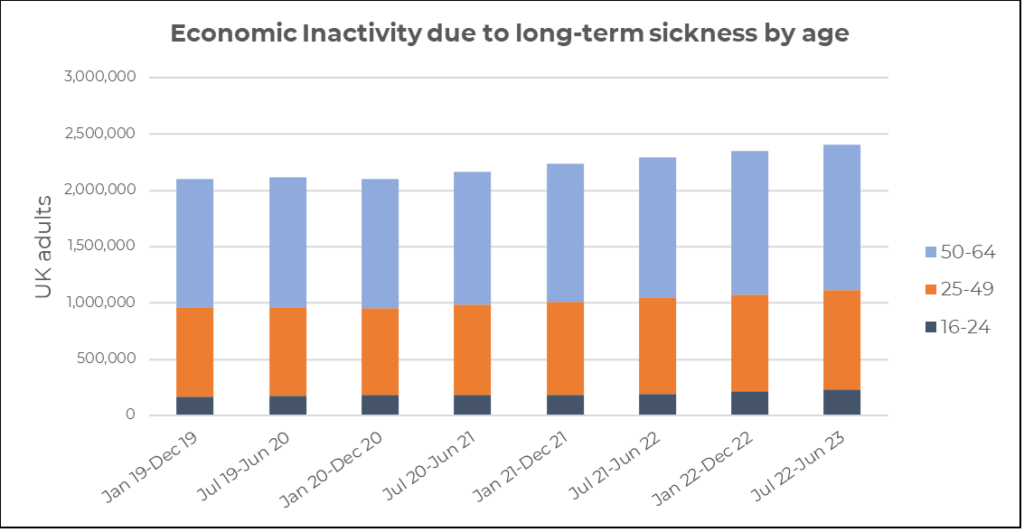- Older workers (50-64) account for the majority of economically inactive due to long-term illness
- One in five – 253,100 – 50–64-year-olds out of work through illness want a job
- Data emphasises opportunity for employers to harness “unwell but not unwilling” if they can support health and boost UK economy
Analysis of the latest Nomis data from the Office for National Statistics on the labour market demonstrates the concentration in economic inactivity because of long-term sickness among older workers as well as its sharp rise among this demographic.
The research from leading independent consultancy Broadstone shows that workers between the age of 50 and 64 represent the majority of those who cannot work because of chronic illness – this group accounts for 54% of the total, or 1.3 million people.
Moreover, of the additional 284,600 working age adults becoming economically inactive because of long-term illness since the pandemic (12 months to March 2020 vs 12 months to June 2023 – latest data available) 136,600, or 48%, were workers aged 50-64.
Yet the economic potential of returning unwell older workers to employment is shown by the fact that a fifth (20%) are keen on a return to work – equating to over a quarter of a million (253,100) potential ‘silver workers’ looking to get back into the labour market.
Brett Hill, Head of Health & Protection at Broadstone, commented: “People are typically more likely to suffer from serious, long-term health conditions as they age.
“This has been exacerbated by the pandemic and the issues in the NHS as people now struggle to access the care they need to quickly diagnose and treat health issues before they get worse.

“It is no co-incidence that we are seeing growing demand from employers for private healthcare options given the importance of retaining staff in the current environment. If they can maintain a healthy, productive workforce across a variety of ages, including experienced older workers, they stand to gain a significant competitive advantage.”
Younger age groups have not been immune to the increase in economic inactivity because of long-term sickness, either.
From the 12 months to March 2020 up until the 12 months to June 2023, economic inactivity from chronic illness increased by 63,700 to 235,200 within the 16-24 age bracket and perhaps points to the growing prevalence of mental wellbeing conditions.
Through the same period, there were a further 91,400 additional 25-49-year-olds falling out of the workforce because of health conditions, contributing to the latest high of 882,500.
“It doesn’t appear that the health situation in the UK is likely to recede in the near future with waiting lists still rising and regular statistics demonstrating the issues people suffer when trying to contact their GP or access NHS services,” said Brett Hill.
“As such we expect employers to invest further in private healthcare. Solutions like digital GPs and health screenings can provide a crucial first line of defence. This is helpful to quickly diagnose and treat health issues so they don’t worsen to the extent that prolonged periods out of the workforce are necessary.”
















